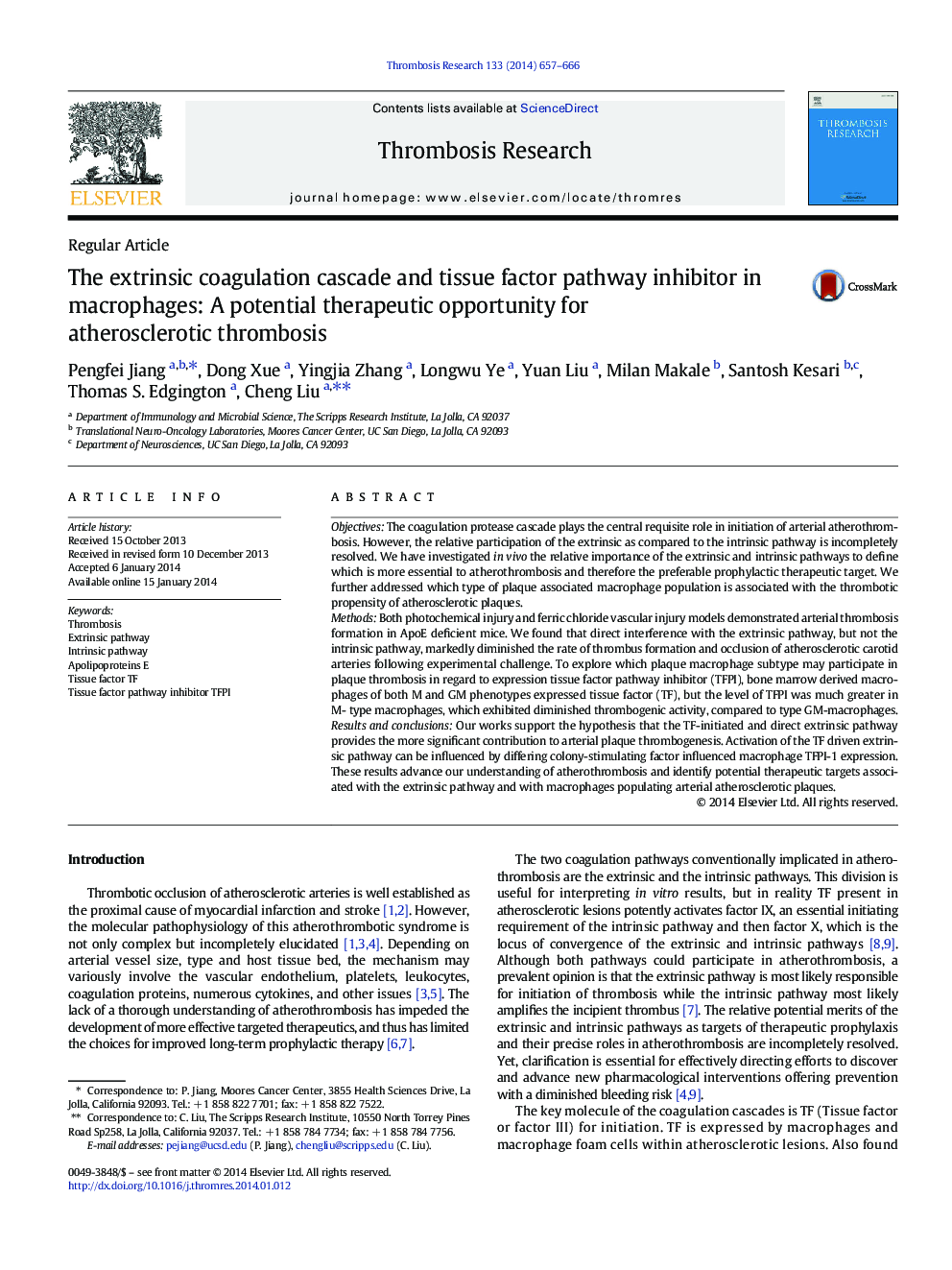| Article ID | Journal | Published Year | Pages | File Type |
|---|---|---|---|---|
| 6001419 | Thrombosis Research | 2014 | 10 Pages |
ObjectivesThe coagulation protease cascade plays the central requisite role in initiation of arterial atherothrombosis. However, the relative participation of the extrinsic as compared to the intrinsic pathway is incompletely resolved. We have investigated in vivo the relative importance of the extrinsic and intrinsic pathways to define which is more essential to atherothrombosis and therefore the preferable prophylactic therapeutic target. We further addressed which type of plaque associated macrophage population is associated with the thrombotic propensity of atherosclerotic plaques.MethodsBoth photochemical injury and ferric chloride vascular injury models demonstrated arterial thrombosis formation in ApoE deficient mice. We found that direct interference with the extrinsic pathway, but not the intrinsic pathway, markedly diminished the rate of thrombus formation and occlusion of atherosclerotic carotid arteries following experimental challenge. To explore which plaque macrophage subtype may participate in plaque thrombosis in regard to expression tissue factor pathway inhibitor (TFPI), bone marrow derived macrophages of both M and GM phenotypes expressed tissue factor (TF), but the level of TFPI was much greater in M- type macrophages, which exhibited diminished thrombogenic activity, compared to type GM-macrophages.Results and conclusionsOur works support the hypothesis that the TF-initiated and direct extrinsic pathway provides the more significant contribution to arterial plaque thrombogenesis. Activation of the TF driven extrinsic pathway can be influenced by differing colony-stimulating factor influenced macrophage TFPI-1 expression. These results advance our understanding of atherothrombosis and identify potential therapeutic targets associated with the extrinsic pathway and with macrophages populating arterial atherosclerotic plaques.
